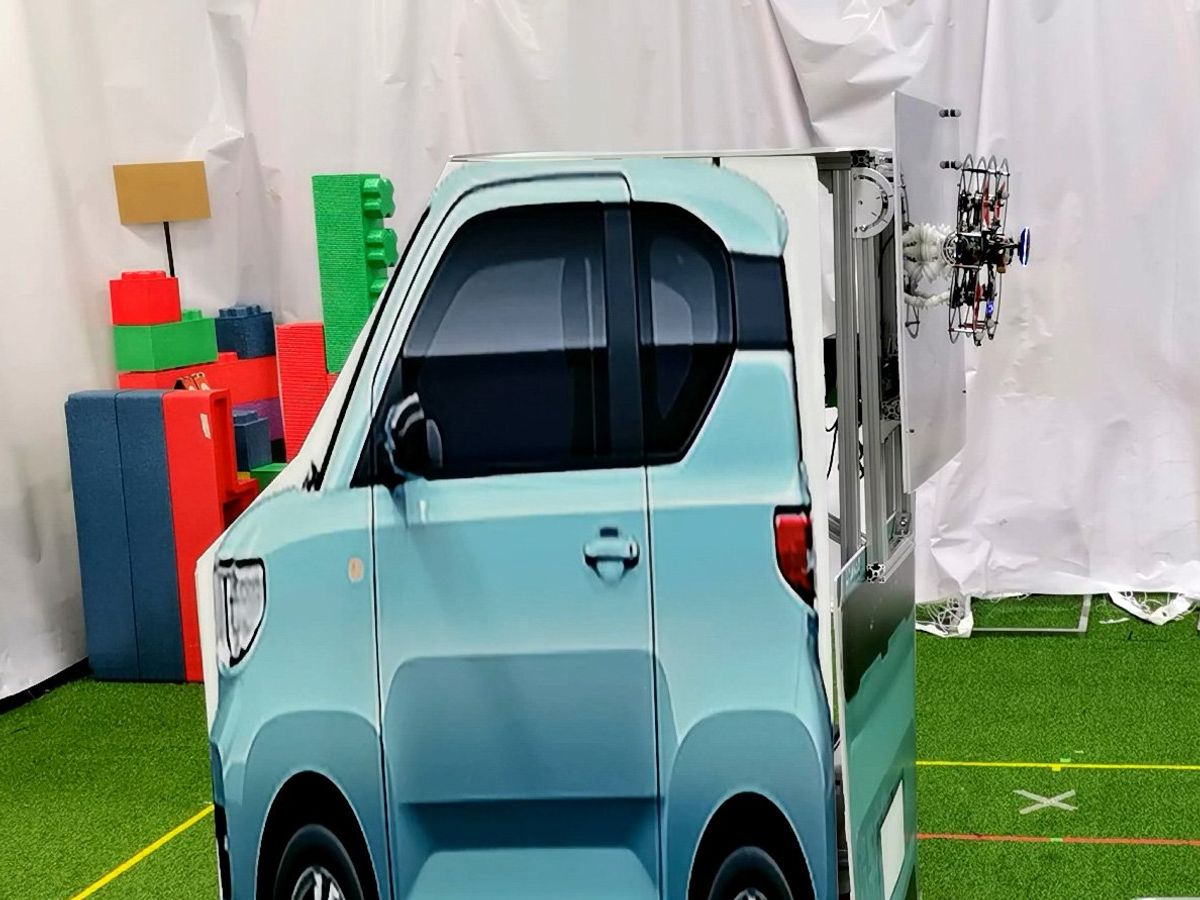This article is part of our exclusive IEEE Journal Watch series in partnership with IEEE Xplore.
Drones are being used for everything, it seems: surveillance, delivery tasks, search and rescue efforts. But as these handy fliers take on more unique and difficult tasks, they need to be able to land in increasingly challenging scenarios. Now, a newly designed drone called Hitchhiker is able to land not just on inclined surfaces, but inclined surfaces in motion—like the side of a moving car.
Sensen Liu designed Hitchhiker as part of his postdoctoral work at the Lab of Cooperative Intelligence of Unmanned Systems at Shanghai Jiao Tong University’s School of Mechanical Engineering. “Our interest stems from the fact that many structures—including buildings, bridges, and ground vehicles—feature inclined surfaces that are difficult for traditional drones to land on,” he explains. “By creating drones with this capability, we can leverage these surfaces as landing sites and expand the possibilities for the use of drone technology.”
Liu’s team is particularly interested in developing drones that can land on the side of moving cars. “The drone would be capable of scouting the surrounding environment while the automobile is in motion, allowing for real-time analysis of the environment,” explains Liu.
Once the drone is done scouting, it could latch onto the side of the car in order to help conserve energy, delaying the time needed before its batteries must be swapped or recharged.
To create such a drone, Liu and colleagues, under the supervision of Wei Dong, an associate professor at Shanghai Jiao Tong University, developed a trajectory planning algorithm that accounts for the individual thrust of each rotor of the quadcopter. It utilizes a two-stage tracking approach that analyzes both the drone’s position and attitude.
To help Hitchhiker latch onto surfaces—even at steep inclines—the drone has a collection of self-sealing suction cups arranged in a wheel configuration along its underside. The wheel configuration increases the chances that the suction cups will come in contact with the desired landing surface, helping to compensate for any errors in the drone’s trajectory planning.
In a series of experiments, the researchers incorporated an adjustable surface to a car, which could be angled at different inclines, and assessed how well Hitchhiker could land on the inclined surface while the car was in motion. The results show that Hitchhiker can successfully and reliably perch land on the surface—at speeds up to 1.07 meters per second and inclinations up to 90 degrees—with a success rate of 70 percent or higher.
The Hitchhiker drone can land on the side of a moving car.www.youtube.com
The self-sealing suction cups are a key factor in helping Hitchhiker latch onto surfaces, the authors say, which increased its success rate by 45 percent compared to a drone with conventional suction cups. They describe the results of these experiments more in detail in their study, published 5 April in IEEE Transactions on Automation Science and Engineering.
Intriguingly, the drone was more successful landing on surfaces moving backwards than forwards. “The slight variation in success rates for perching on surfaces in forward versus backward motion came as a surprise,” says Dong, noting that this may possibly be because the attitude and velocity control inputs align more closely when the surface moves backward, minimizing any errors in the drone’s grip on the surface.
One current limitation of Hitchhiker is that it relies on an external positioning camera. In the future, the research team would like to explore ways to ensure Hitchhiker can land on surfaces without the need for this external equipment.
“To accomplish this, we plan to develop new, onboard vision-based algorithms that leverage advanced targeting and positioning systems, even during large attitude flight operations,” says Dong. “We are excited about the potential of this technology and are actively exploring various commercialization opportunities to bring it to market.”
Michelle Hampson is a freelance writer based in Halifax. She frequently contributes to Spectrum's Journal Watch coverage, which highlights newsworthy studies published in IEEE journals.



